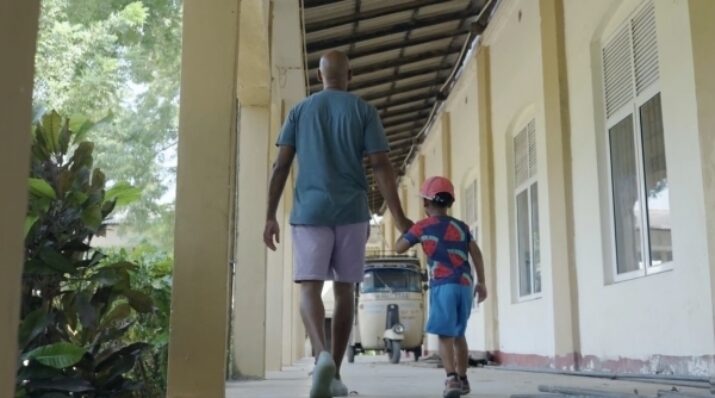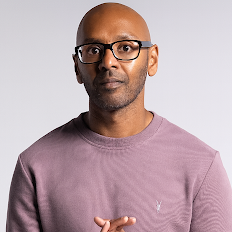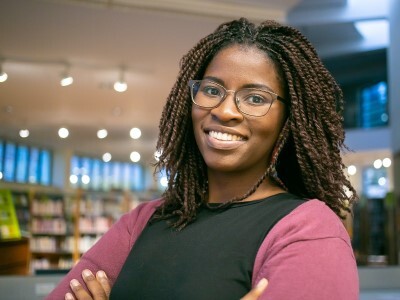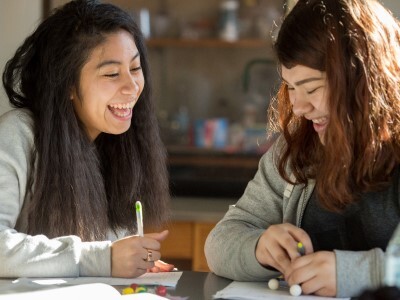The Importance of Storytelling in Educational Leadership
Topics

Next generation learning is all about everyone in the system—from students through teachers to policymakers—taking charge of their own learning, development, and work. That doesn’t happen by forcing change through mandates and compliance. It happens by creating the environment and the equity of opportunity for everyone in the system to do their best possible work.
Storytelling creates safe, supportive spaces for educators to pause, reflect, and reconnect with their purpose; in professional learning, storytelling fosters leadership with empathy, agency, and belonging.
“Wisdom covers power.” Those are the final words in my son’s Kung Fu class, spoken by the sifu (a word that means master and teacher). Although kids might glamorize black belts, highlight-reel kicks, and breaking boards, the sifu is clear that Kung Fu isn’t about physical dominance. True masters understand the importance of restraint, humility, and honoring the knowledge passed down through generations.
That idea struck me the first time I learned about it because it reminded me of the educators who shaped me. Teaching isn’t just about facts and data. It’s about offering students a connection to wisdom that transcends time. We don’t remember our favorite teachers for the content they delivered. We remember the personal connections, which often take the form of the stories they shared and the stories they helped us create.
The concept of lineage has shaped my perspective on leadership. Too often, leaders are celebrated as lone heroes, expected to push forward at all costs. But real leadership is sustained through connection: to those who came before us, to those alongside us, and to those who will carry the work forward.
A Journey of Legacy and Reflection
My father was a renowned diplomat. When he passed away, I traveled to Sri Lanka with my family to pay tribute to his achievements. Instead, I found myself questioning how much of my life had been shaped by inherited definitions of success.
In my early career, I buried myself in work ethic and ambition, believing this was the only path. I operated like a machine, disconnected from the people around me. A turning point came during a team workshop where colleagues shared the highs and lows of their lives. As I listened to stories of love, loss, purpose, and pain, I realized: connection fuels collaboration, and stories are the bridge.
That realization became central to the film, In Pursuit Of, my love letter to my father and a cross-continental journey through leadership, identity, and the personal cost of “greatness.”
The trailer of In Pursuit Of
Rituals that Sustain Us
In Sri Lanka, I learned about Tharpanam: a daily ritual of honoring one’s ancestors. The act isn’t about dwelling in the past; it’s about grounding in the wisdom of those who came before so we can lead with clarity today.
Tharpanam is performed in a wide range of contexts. For me, it is most familiar through a ceremony that celebrates my Dad, aligned with the anniversary of his passing. It is a heavy moment, one that reminds me of my grief and obligation as his only son.
However, Tharpanam is an act of gratitude. It is a safe space to recognize the wisdom and momentum that we have inherited, not as a static artifact, but as an endless current that takes shape with each lesson, memory, and action.
For educators, storytelling can serve the same purpose: a ritual that grounds us, connects us, and sustains our capacity to lead.
The Educator Parallel
In conversations with school leaders across the U.S. and beyond, especially during my time as CEO of Our Turn, I have heard echoes of my journey. Many educators and district leaders carry the weight of legacy and relentless expectations, navigating high-stakes environments while striving to nurture students and drive transformation.
Too often, we push forward without pausing to align on our “why:” the bet others made on us, the purpose that fuels us, and the future we want to shape. Without those intentional moments of reflection and healing, burnout becomes inevitable. We operate on someone else’s agenda, suppress our voice, and lose sight of the unique value our journey brings.
I explore this in my TED Talk on the breakthrough power of young leaders, where I share why truly effective leadership begins with listening to the voices of the next generation.
Storytelling offers a powerful antidote. It creates safe, supportive spaces for educators to pause, reflect, and reconnect with their purpose. The In Pursuit Of impact campaign, created in partnership with Picture Motion, offers more than a film; it’s a catalyst for professional learning and cultural transformation. In doing so, it fosters empathy, strengthens agency, and builds the culture and belonging necessary for sustained, student-centered change.
From Insight to Action: Leadership Lessons for Educators
When we have shared In Pursuit Of with audiences of all ages and backgrounds, we have been amazed by the diverse range of responses. I expected that people would share my admiration for my Dad, but their reflections have been transcendent:
- Legacy vs. Burnout: We recognize how inherited expectations and cultures of overachievement can deplete leaders without intentional reflection and support.
- Intergenerational Healing: There is significant demand for dialogue between students, educators, and communities to co-create healthier definitions of success.
- Culturally Responsive Leadership: We must embrace how personal identity and lived experience shape the way we show up for our schools and our learners.
These reflections have affirmed something I’ve long believed: when we create space for storytelling, especially across generations, we open the door to healing, connection, and clarity.
A Tool for Reflection, Dialogue, and Change
To help foster those kinds of conversations, we’ve been organizing grassroots screenings and workshops grounded in the themes of In Pursuit Of. These gatherings aren’t about the film itself; they’re about what it unlocks: a space for reflection, a pause from the pace, and a chance to realign with purpose.
Educators and district teams have used these sessions to explore questions of wellness and sustainability. Student leaders have connected their personal stories to broader conversations about legacy and identity. And communities of practice have used it as a springboard for deep, values-driven work.
Sometimes all it takes is a story to start a different kind of conversation.
Lone heroes don’t sustain leadership; it thrives through lineage.
When we ground ourselves in the wisdom of those who came before, connect deeply with those alongside us, and prepare the way for those who will follow, we create the conditions for lasting impact.
That’s the leadership story I believe our schools, and our world, need now.
Image at top: a still from the film In Pursuit Of. All rights reserved.




